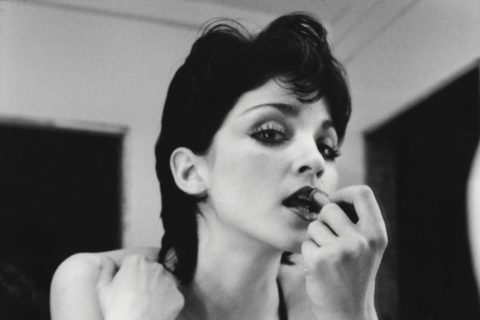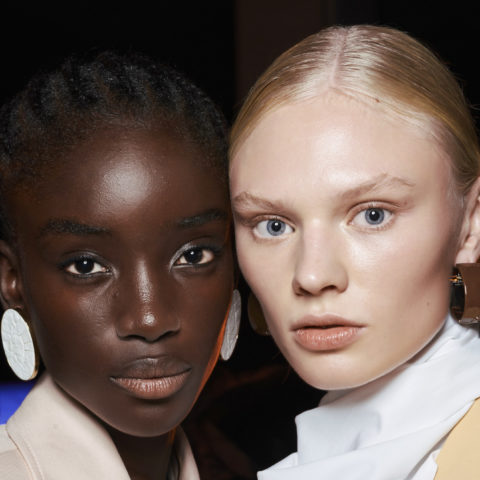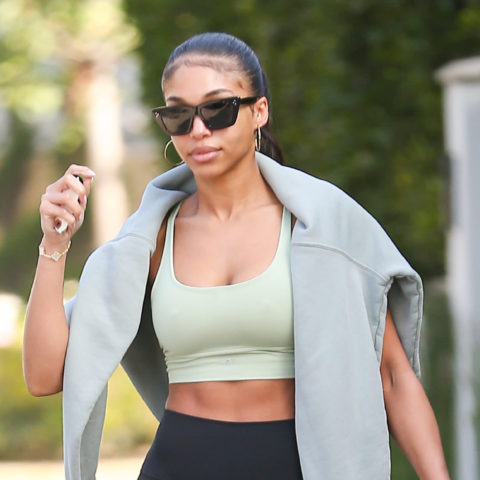Why Musicians Trash their Old Looks and Reinvent Themselves
Harry Styles cut his hair off in the wake of One Direction going on hiatus, and Justin Bieber and Miley Cyrus bleached theirs upon entering new, riskier life phases.
In seventh grade, I wanted to be Baby Spice. So, despite having wavy brown hair and not being allowed to wear real makeup, I pulled my hair into pigtails, swiped on clear lipgloss and told myself that by doing these things, I looked just like Emma Bunton.
Of course, we didn’t look alike, sound alike or dress alike. But emulating her through hair and makeup made me feel less awkward. Because I had pigtails like Baby Spice, I could feel cute and grown-up and, more importantly, “zig-a-zig-ah” (whatever that meant).
And I wasn’t the only one. More than two decades after the release of “Wannabe,” we still tie the Spice Girls to what they looked like. While beauty and music both rely on evolution, the two still find themselves rooted in specific personas or even subcultures, and where models and actresses rely on being aesthetically fluid, musicians make beauty seem like an extension of self.
This concept is hardly new. When Beatlemania hit in the 1960s, the Fab Four not only brought interesting haircuts with them but also introduced North America to England’s mod culture and the fashion and beauty that went with it. In the 1970s, David Bowie presented the masses with bold androgyny, blurring the lines between traditional masculinity and femininity with bright hair, vibrant makeup and sequined suits. In the 1980s, post-punk brought with it dark hair and lined eyes thanks to acts like The Cure, while the same decade delivered Madonna, a woman whose career is based on the versions of herself that she creates over and over again.
And then there were the 1990s. Eclectic and reactionary, this decade created space for more genres (finally) by celebrating artists like Selena (whose makeup became so iconic that M.A.C released a collection based on it—21 years after her death), Courtney Love (whose dark eye makeup and smeared lips became staples of the ’90s) and TLC (with their hairstyles that were—and still are—unparalleled). Plus, there were pop acts like the Spice Girls, Britney Spears and Christina Aguilera, whose aesthetics lacked risk but made them seem accessible to young listeners. Now we have singers like Rihanna (who recently launched a bestselling makeup line) and Ariana Grande (forever one with her trademark ponytail) who continue to change and evolve but still remain loyal to certain beauty choices. And we still aspire to look like them.
Well, not technically. In 2018, authenticity is currency, especially when it comes from musicians. But that’s why we gravitate to the artists whose looks represent the traits we want to see in ourselves. When we use Fenty Beauty, we’re not trying to copy Rihanna—we’re trying to channel her complexity and her confidence. When we wear Grande’s M.A.C lipsticks, we don’t think anyone’s about to mistake us for the singer, but we do feel closer to who we think she is (and the aspects of her art and music and personality that we wish we had). And that makes reinvention even more exciting, because if a musician taps into a part of themselves they haven’t explored before, through beauty, what will this new phase teach us about ourselves? The possibilities are endless.
This is particularly true because reinvention and change are crucial to good music. And while some beauty trademarks may not completely disappear (see: Grande’s ponytail), most artists do tend to parallel their new musical eras with new approaches to aesthetics and beauty. And why wouldn’t they? An artist who remains aesthetically stagnant can be accused of stagnation in their craft. Think about it: Drake grew a beard to (we assume) appear more adult. Rihanna has had a different hair colour and hairstyle for every album. Grande may still have the ponytail, but her makeup is darker and more dramatic. Even when it’s subtle, change can be afoot. Not everybody has to be Madonna. And not everyone should. While Madonna’s career has been largely built on her ability to shape-shift, she has also regularly made gross missteps through cultural appropriation (see: her bindi phase).
To many musicians, evolution comes in the form of complete abandonment. Harry Styles cut his hair off in the wake of One Direction going on hiatus, and Justin Bieber and Miley Cyrus bleached theirs upon entering new, riskier life phases. But not every sign of evolution needs to involve shock-worthy change. Bowie stopped being Ziggy Stardust decades before his death, but he never condemned that era—or anyone who still loved it. Love no longer prefers her lipstick smeared. Posh Spice changed her bob, and Beyoncé’s hair looks nothing like it did during her Destiny’s Child days. To incite change through transitioning one’s hair and makeup is healthy and good, but to condemn anything that came before them is not, especially since it suggests that anyone who emulated that era was wrong.
And I don’t think I was. Sure, I was a 12-year-old girl with uneven pigtails in Northern Getaway sweats, but I felt like a grown-ass woman named Baby Spice. And while I wouldn’t do it again, I still appreciate that it allowed me to feel how I imagined a pop star feels—even though I was reading alone at recess.








